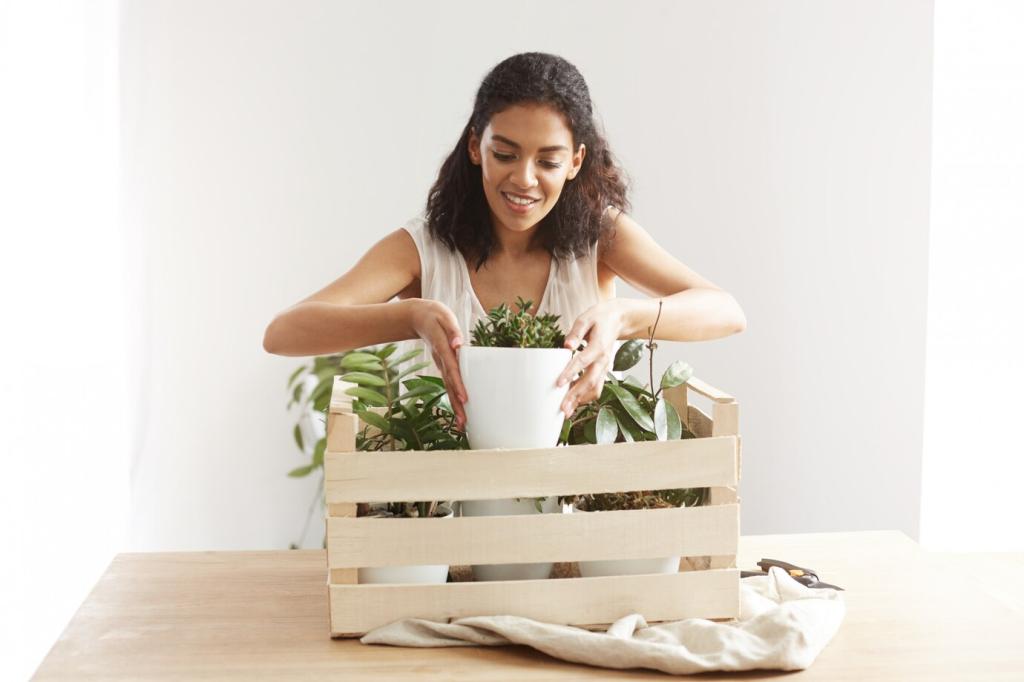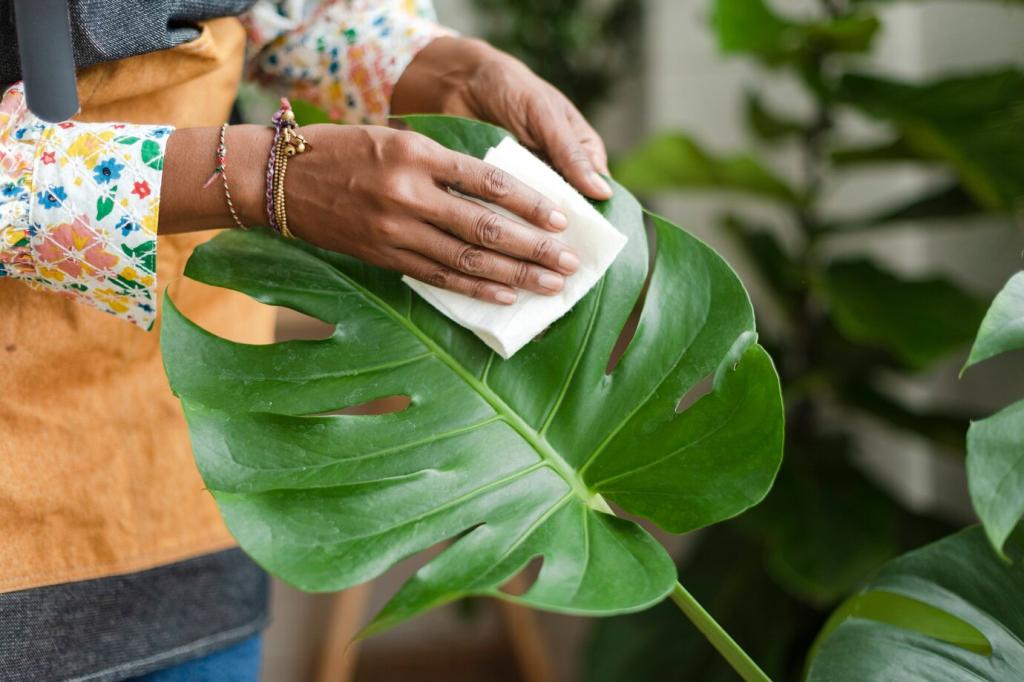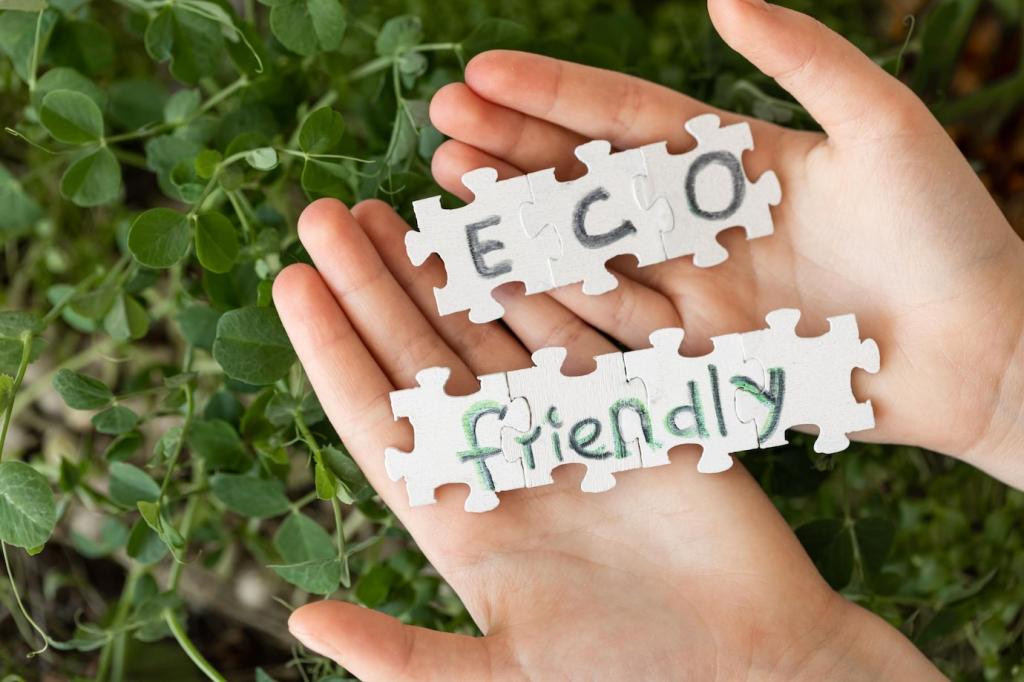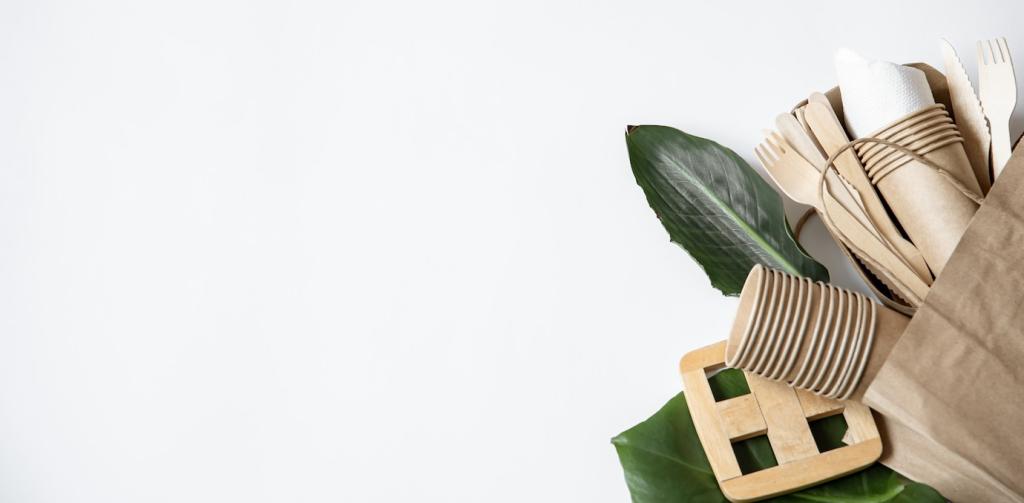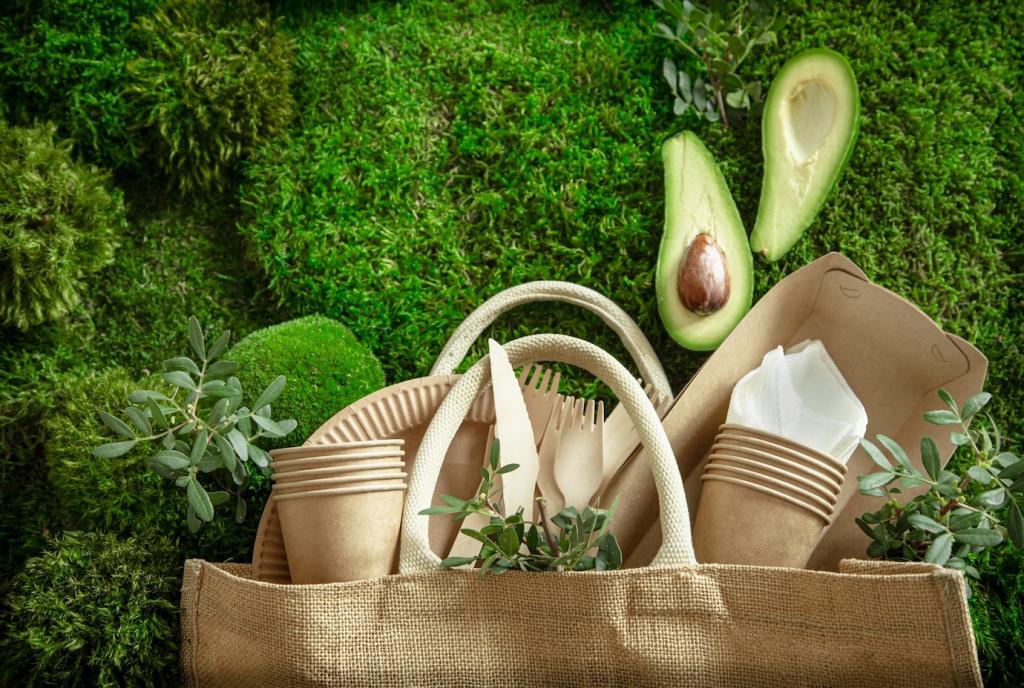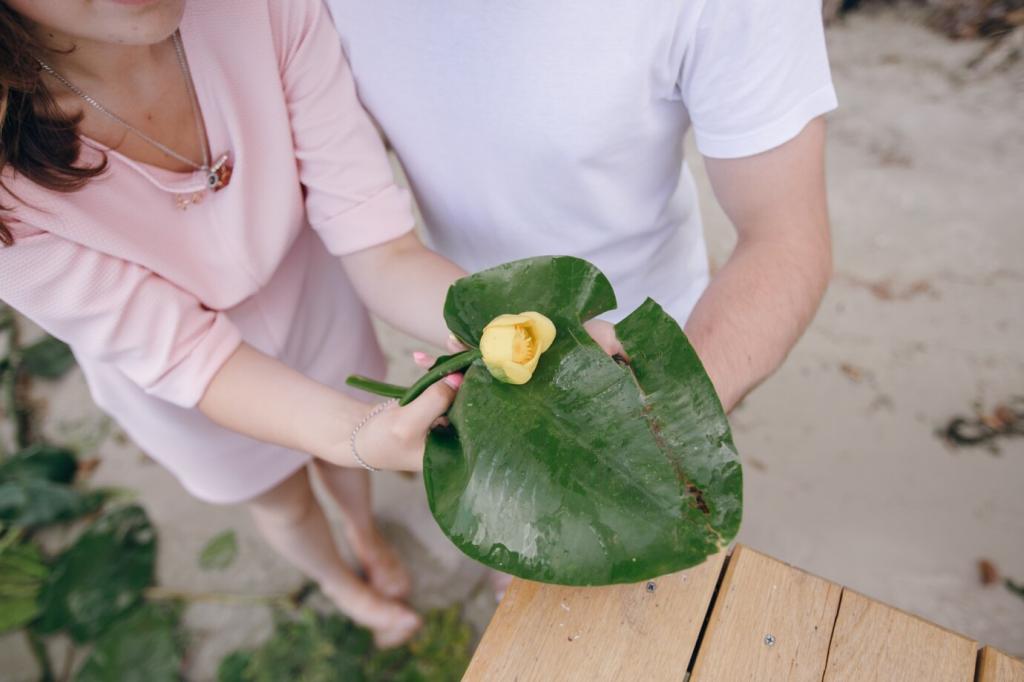Know Your Wood and Finish Before You Clean
Oil and wax finishes like gentle conditioners and minimal moisture. Lacquer and shellac can react to alcohol and acids. Polyurethane is durable but still dislikes standing water. If you’re unsure, treat it as delicate, and step up cautiously after a careful spot test.
Know Your Wood and Finish Before You Clean
Test cleaners on a hidden edge, underside, or inside leg where finish continues from the top. Use a cotton swab, wait a full minute, then buff dry. No color transfer, tackiness, or hazy patches means you’re clear to proceed with confidence.



